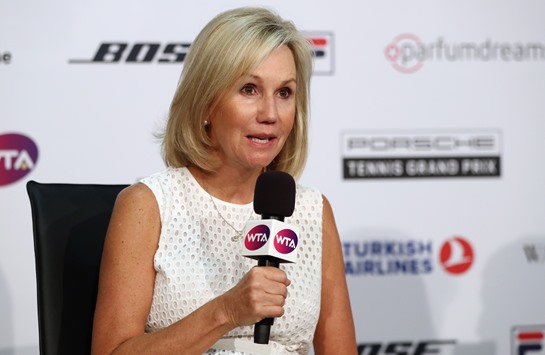As part of Women’s Tennis Association (WTA) initiative to develop tennis across the world, WTA President Micky Lawler has indicated plans to develop the sports in Africa.
Lawler has been the brain behind WTA’s international growth strategy, business development and marketing for the past four years. Through the years, the mother of three has broken the barriers of a good representation in the WTA, driven growth in all aspect of the tennis business across athletes and sponsorship.
For three decades, Lawler has also been instrumental in the steady growth in professional tennis, driving innovation, governance, sponsorship as a leader of tennis at Octagon (a sports and entertainment marketing company in New York), WTA board, and entertainment expertise.
As part of Ladies in Sports Conference Presentation, the WTA boss shared with www.ACLSports.com about her plans for Women’s Tennis in Africa and why she would want to consolidate on previous tournaments.
Lawler said, “The WTA at its core identity is a body of women representing nearly 90 countries, we hope that number never stops growing. We’d absolutely welcome more events in Africa. We currently have an International event in Rabat, Morocco in April and in the past, an event in Johannesburg, South Africa (1971–1977, 1984). It is what makes our sport so exciting, new stars to emerge, new destinations to embrace, backgrounds and stories to share. Our tour is constantly evolving and if the appetite, resources and time in the calendar presents itself, women’s tennis will be there.
For Lawler, there will be a need to work with the African Sports Federations to organise tournaments across the continent.
“We’re very excited about it. With stars like Ons Jabeur from Tunisia, the fans, talent and appetite for Women’s tennis will surely grow. The structure of our organisation is modelled to give talented young women the stage and opportunity to compete. We work closely with local governments and sports federations to ensure the grassroots programs are supported through our foundation and players, along with balancing the needs of the destination, first by supporting the growth of the infrastructure.”
Lawler explained how she found a career in tennis when all she ever wanted was working with the United Nations.
“I have always loved tennis, but it was by total chance that I found myself working at what is now known as the ATP. I was 27 at the time with degrees in Political Science and Linguistics. Becoming a Communications officer for the men’s professional tennis tour and travelling the world to work with the athletes and the press was incredibly exciting. Now working for the women’s tour, I am very fortunate to have gained the contrasting insights and experiences from a completely different perspective of the sport. When I was young I always thought I would work for the United Nations. It turns out that professional tennis is somewhat like the United Nations.”
Before the open era, the winner of the women’s events had to settle for a fraction of the men’s wages something legendary founder of the WTA and 39 Grand Slam Champion (12 singles, 16 doubles and 11 mixed doubles), Billie Jean King frowned at and called for equal distribution.
Lawler believes the fight for equality between the men and women’s tennis is on course and only needs a matter of time to achieve success.
“It’s been a long journey, trail blazed by incredible women like Billie Jean King and as a result, we’re very fortunate to have Equal prize money for women as a settled matter in 2019. We’re incredibly proud that the four Grand Slams, WTA Finals and all combined, tour-level events that have the same player field, are committed to paying equal prize money to the men and women. There is, of course, always more work to be done and so our mission continues relentlessly to amplify our player’s voices and talent, connect them with new fans and grow the sport so that there are no gender gaps of any type, whether that be earning potential, media exposure, leadership or otherwise.
She further disclosed the difference between working in the men and women’s tennis.
“The culture of the two leagues is somewhat different. When I worked with the men’s tour, certain areas of the business were more established: the media exposure, the fan following, while the women’s tour has had to hustle, validate, get creative and speak up for their share of the business. Needless to say, it has paid off and I’m proud to see the progress and balance we experience now: Sponsors pursuing the female leagues, conversations being had with both leagues together. Networks seeing equal value in both leagues as one sport.”









